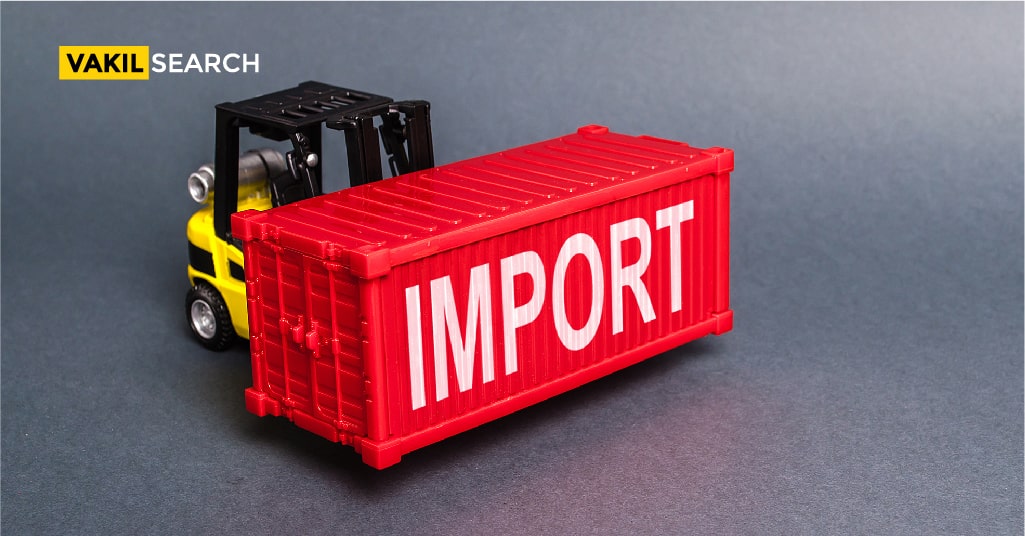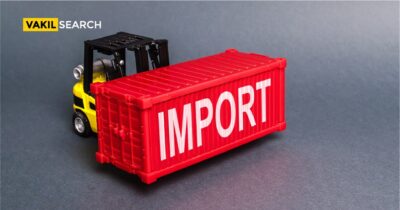A notification from the Directorate General of Foreign Trade (DGFT) states that animal by-products are no longer free to export,
With the advent of globalization and the opening of free markets, the potential for cross-border business has expanded significantly. To facilitate and regulate import-export activities, the Government of India issues a 10-digit unique identification called the Import-Export Code (IEC).
In this comprehensive guide, we will delve into the significance of the IEC, the eligibility criteria for obtaining it, and the step-by-step process to secure this crucial identification number.
| In the dynamic landscape of global trade, India has emerged as a key player in South Asia thanks to efforts made by the Directorate General of Foreign Trade. |
What Is an Import-Export Code?
An Import-Export Code (IEC) is a unique 10-digit alphanumeric code issued by the Directorate General of Foreign Trade (DGFT), which operates under the Ministry of Commerce and Industry in India. The IEC is a mandatory requirement for individuals or businesses involved in importing or exporting goods and services from or to India. This code serves as a key identifier for customs authorities and is essential for facilitating international trade transactions.
Key features and aspects of the Import-Export Code include:
-
Mandatory Requirement:
Obtaining an IEC is mandatory for any individual or business entity seeking to engage in import or export activities in India. Whether for commercial purposes or personal use, having an IEC is crucial for smooth and legal cross-border trade transactions.
-
Uniqueness:
Each Import-Export Code is unique and is assigned to a specific individual or business entity. This uniqueness helps in accurate identification and tracking of the entities involved in international trade.
-
No Requirement for Renewal:
Unlike some licenses or permits, the Import-Export Code does not require regular renewal. Once issued, it remains valid for the lifetime of the entity, unless it is canceled or surrendered.
-
Application Process:
The application for an IEC is typically submitted online through the DGFT’s official website. The applicant needs to provide relevant details such as their business information, bank details, and a valid PAN (Permanent Account Number) among other documents.
-
Quick Processing:
The processing time for IEC applications is relatively quick, and once approved, the code is issued promptly. This facilitates businesses in initiating and expanding their international trade operations without unnecessary delays.
-
Usage of IEC:
The Import-Export Code is used in all customs-related transactions involving the import or export of goods and services. It is mentioned on shipping documents, invoices, and other trade-related documents, enabling customs authorities to track and regulate cross-border transactions.
-
Exemption for Certain Categories:
While IEC is generally required for most importers and exporters, there are specific categories of individuals or entities exempted from obtaining it. These exemptions are outlined in the Foreign Trade Policy of India.
-
Cancellations and Amendments:
The DGFT has the authority to cancel or amend an IEC in certain circumstances, such as non-compliance with regulations or changes in the business structure.
Eligibility for Obtaining the IEC Number
The eligibility criteria for obtaining the IEC number are governed by the provisions of the Foreign Trade (Regulation) Rules, 1993. For companies dealing with the import/export of goods, the IEC is a mandatory requirement.
However, in the case of services or technology, IEC is necessary only under specific circumstances, such as dealing with ‘specified services’ or ‘specified technologies’ restricted by the Government of India due to national security concerns (e.g., nuclear weapons, automatic guns, etc.).
Exemptions from IEC Requirement
There are exemptions from the IEC requirement under certain circumstances, including:
- Import/export of goods for personal use not connected with trade, manufacture, or agriculture.
- Import/export conducted by government ministries and departments, along with certain notified charitable organizations.
What Is the Procedure for Obtaining the IEC Number?
The process of obtaining the IEC number involves several steps, ensuring a systematic and transparent approach. The applicant’s Registered/Head Office initiates the IEC application with the nearest Regional Authority of the Directorate General Foreign Trade (DGFT).
Submission of Application: The applicant must submit the necessary forms, primarily the ‘Aayaat Niryaat Form – ANF2A.’
Single IEC against a PAN Number: Only one IEC will be issued against a single PAN number. If a proprietor has more than one IEC, the excess should be surrendered to the Regional Office for cancellation.
| Those filing online manually should apply in Word format as a soft copy. |
Mandatory documents required for IEC code:
- Current account details
- PAN card
- Bankers Certificate
- Two copies of passport-size photographs
- A self-addressed envelope for delivery of the IEC certificate by registered post
| The IEC number, once obtained, becomes a cornerstone for businesses navigating the complexities of global trade. |
How to get the IEC application form Online?
The application form, ANF2A, can be downloaded in PDF or Word format from the DGFT website. Applicants must ensure that Appendix 18B is attested by bank authorities on their letterhead, accompanied by two passport-size photos. The IEC number issued to an applicant is valid for all its branches, divisions, units, or factories, as indicated in the provided format.
| A nominal application fee of ₹250 is applicable. Payment can be made through Demand Draft (DD), TR6 challan, or Electronic Fund Transfer (EFT) by the Nominated Bank of DGFT. The applicant must submit the TR6 Challan along with the IEC Code application. |
The Takeaway
In conclusion, obtaining an Import-Export Code is a crucial step for businesses venturing into international trade. The application process, whether online or offline, demands careful attention to detail. The IEC application must be completed without errors and signed accurately, as incomplete applications are likely to face rejection.
To approach the application process diligently, ensuring compliance with all requirements for smooth import-export operations, reach out to the experts at Vakilsearch! Our professional advisors are equipped to assist you in all your IEC needs!
Frequently Asked Question
What to do in case you lose the IEC number?
In case you lose or misplace your IEC number, the issuing authority may consider requests for the grant of a duplicate copy of the IEC number if accompanied by an affidavit and FIR copy.
What to do if you no longer want the IEC number?
In case one is not willing to operate the allotted IEC number, the same can be legally surrendered by informing the issuing authority. On receipt of such intimation, the issuing authority shall immediately cancel the same and electronically transmit it to DGFT for onward transmission to the Customs and Regional Authorities.
Also, Read:










